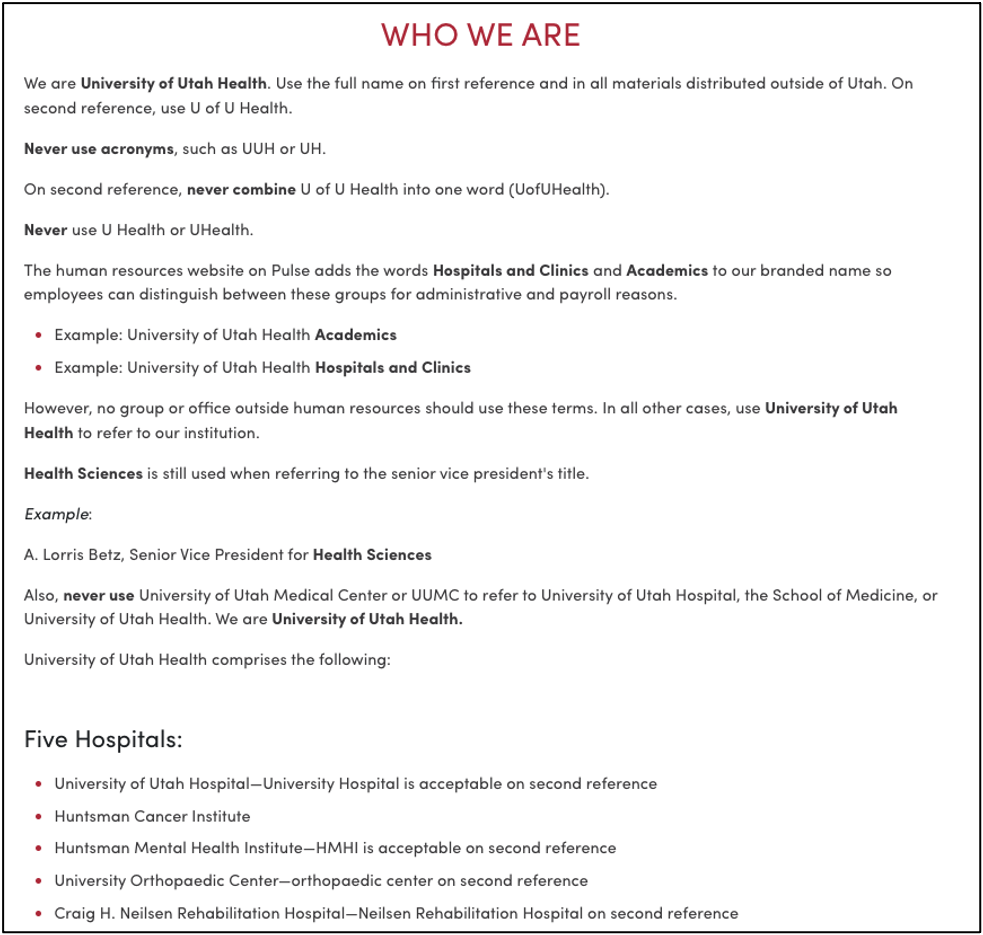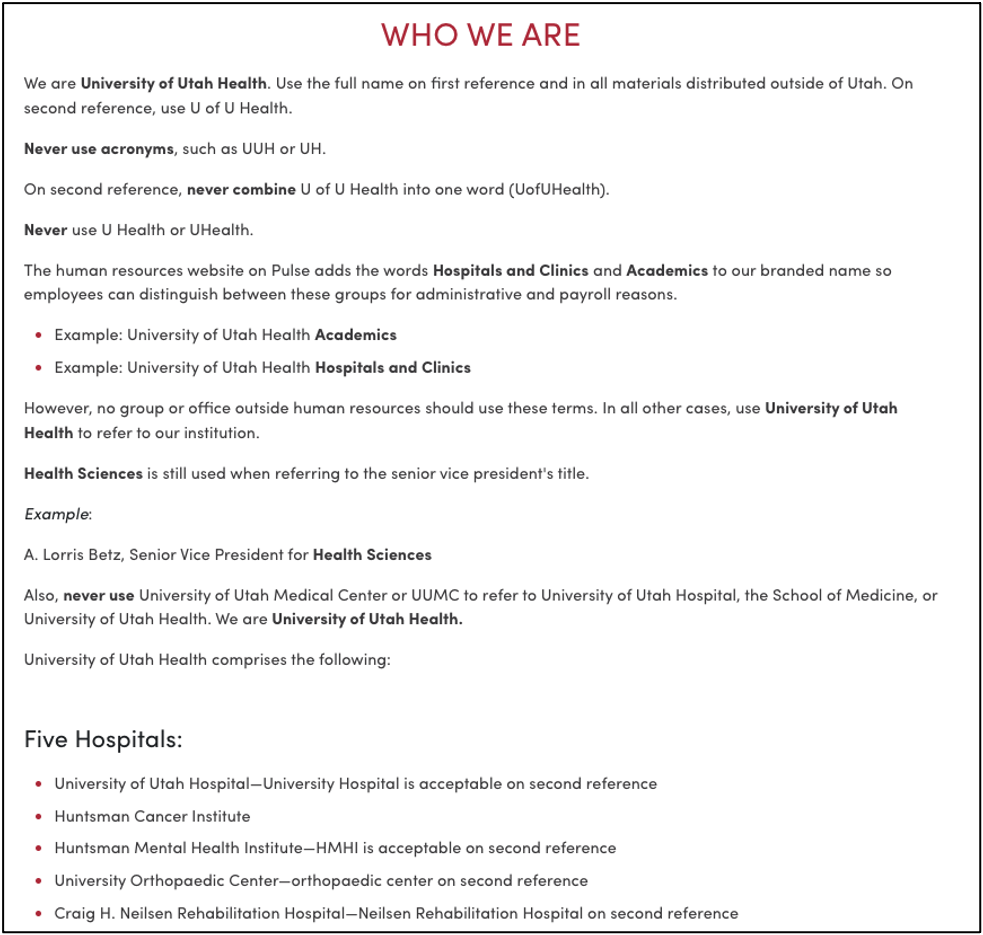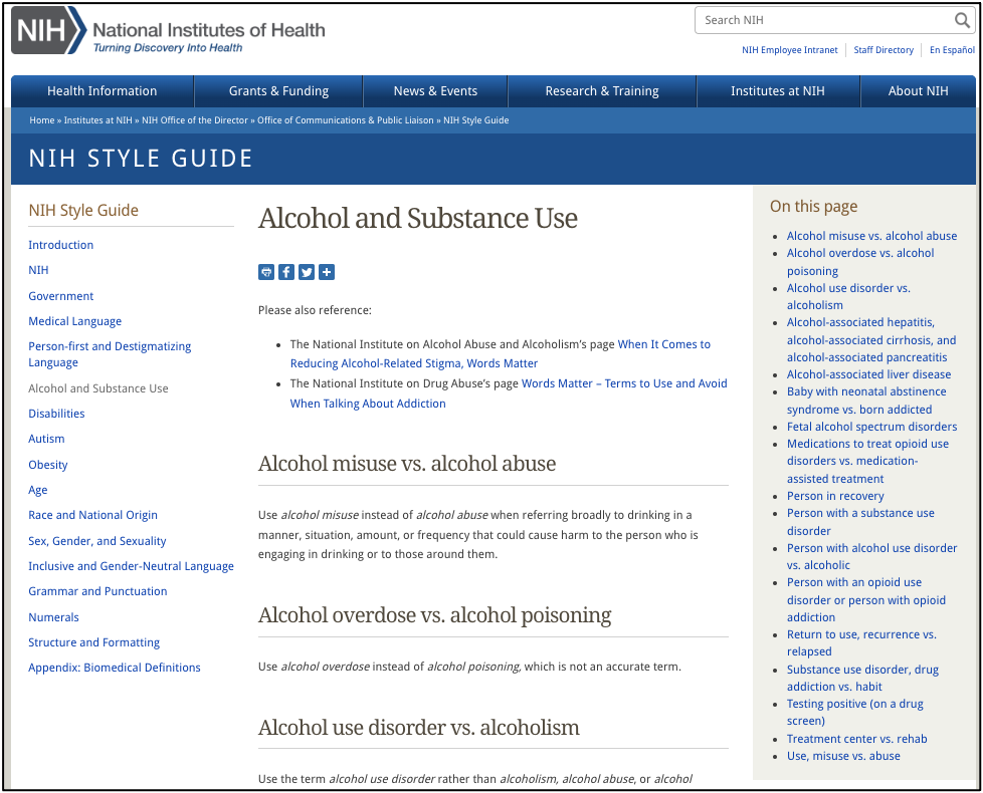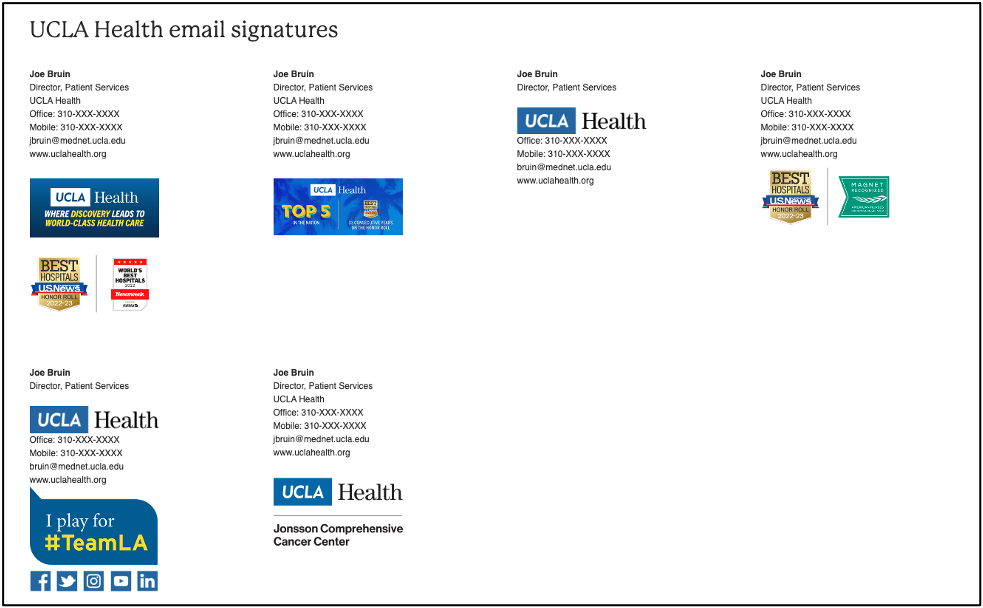Notifications
ALL BUSINESS
COMIDA
DIRECTORIES
ENTERTAINMENT
FINER THINGS
HEALTH
MARKETPLACE
MEMBER's ONLY
MONEY MATTER$
MOTIVATIONAL
NEWS & WEATHER
TECHNOLOGIA
TV NETWORKS
VIDEOS
VOTE USA 2026/2028
INVESTOR RELATIONS
COMING 2026 / 2027
ALL BUSINESS
COMIDA
DIRECTORIES
ENTERTAINMENT
FINER THINGS
HEALTH
MARKETPLACE
MEMBER's ONLY
MONEY MATTER$
MOTIVATIONAL
NEWS & WEATHER
TECHNOLOGIA
TV NETWORKS
VIDEOS
VOTE USA 2026/2028
INVESTOR RELATIONS
COMING 2026 / 2027
About Me
 Latinos Media
Latinos Media Latinos Media provides all types of news feeds on a daily basis to our Members
Posted by - Latinos Media -
on - April 11, 2023 -
Filed in - Salud -
-
1.3K Views - 0 Comments - 0 Likes - 0 Reviews

You might remember writing style guides from college. Chicago Manual of Style, Associated Press, Modern Language Association?
Instead of using a generic style guide for content, today’s leading healthcare brands are creating their own, also known as content style guides.
A content style guide is a companion to your brand style guide and helps writers and marketers write on-brand copy for your business.
Here, I share what’s inside this type of guide and provide examples of how it helps produce clear and consistent content across teams and channels.
What Is a Writing Style Guide?A writing style guide outlines essential dos and don’ts, giving writers and other key stakeholders a toolkit for creating on-brand content that meets your needs and expectations—while eliminating repetitive or arbitrary edits.
Just like your brand style guide helps people use your logos and brand colors properly, a writing style guide dives even deeper into how to write content for your brand.
This deeper dive includes style choices for everything from the Oxford comma (yes, or no?) to how to spell your business name across various locations.
I say “living document” because your content style guide should never be set in stone. It should be updated, refined, or added to as new preferences are identified.
How It Complements the Brand Style GuideA brand style guide usually includes the basics of brand messaging (tagline, value proposition, messaging pillars) and essence (voice, tone, and personality).
So, if you haven’t already, creating a foundational brand style guide is essential to cultivating brand recognition.
Let’s dive into the nuts and bolts of a healthcare content style guide tailored for your business.
The Anatomy of a Healthcare Content Style GuideThe Table of Content for a typical style guide might include the following sections:
Here’s what you can include in each of these sections:
Writing Goals and PrinciplesIdentify what you want each piece of published content to achieve for your brand—and how you aim to achieve those goals.
For example, when writing content for the Healthcare Success blog, we aim to educate, guide, and inspire our readers in a friendly and helpful way. To achieve those goals, we work hard to ensure our content is well-researched, relevant, useful, easy to understand, and relatable.
Voice and ToneIf not included in the brand style guide, it’s important to outline your brand’s approved voice and acceptable tone variations. Here are some insights for each:
VoiceBrand voice is the distinct and unique personality your brand uses across all its communications to appeal to its target audience.
Building a consistent brand voice across platforms offers peace of mind and builds trust with your target audience. The best way to outline your brand voice in your content marketing style guide is to provide language and messaging examples that showcase your characteristics, terminology, and brand values.
Here are four easy steps to create a brand voice:
A brand voice never changes. But the tone varies depending on the target persona, the topic, where they are in the buyer’s journey, and which channel they’re on.
For example, when writing copy for your company website, you may opt for a formal tone that conveys warmth, compassion, and understanding. However, when communicating with followers on social media, you may pivot to a more relaxed, informal tone that conveys the same thing.
In both cases, your personality and values remain the same (brand voice), but how you communicate shifts (brand tone).
Writing About Your BusinessEvery healthcare writing style guide should include a list of dos and don’ts for writing about your business.
This list should include the correct way to refer to your brand (e.g., “Healthcare Success” vs. “Health Care Success, LLC”) and products, how to refer to your target audience (e.g., consumers, clients, or patients), and how to refer to your doctors and specialists.
If your business has multiple locations, you may also include preferred emails and phone numbers for each location.
The University of Utah lays it out succinctly for its primary brand and five hospitals:

I’d also like to highlight the importance of having clear guidelines for more sensitive businesses, such as addiction centers for alcohol and substance use.
Compassion and healing are paramount when writing content for addiction and recovery centers. Therefore, a medical writing style guide must include a list of words and phrases to avoid (e.g., addict, drug addict, alcoholic, substance abuse, etc.) and identify preferred alternatives (e.g., a person with addiction, addicted person, substance use disorder, etc.).
The National Institutes of Health Style Guide has a comprehensive set of guidelines for this industry:
 Grammar Rules and Mechanics
Grammar Rules and Mechanics
To keep your writing clear and consistent, it’s essential to clearly outline your “house rules” for things like:
A comprehensive writing style guide should include principles for writing different types of content and general guidelines for writing (e.g., keep sentences and paragraphs short, use plain language, etc.).
For example:
Educational ContentThis section lays the groundwork for content marketing that educates. It should include the preferred types of educational content your business builds and shares (e.g., eBooks, YouTube videos, webinars, staff training materials, tutorials, and frequently asked questions) and any elements that must be consistent throughout.
EmailWhen crafting email communications, it’s important to pay attention to detail. In this section, identifying the following elements will help keep your email communications consistent, which helps build trust with your audience:
This guide can also outline approved email signatures for internal and external communications. UCLA Health does a great job of explaining how to create an email signature and what it should look like:
 Social Media
Social Media
Social media can feel like the Wild West at times. For this reason, it’s essential to lay out guiding principles that will keep your messages clear, consistent, and out of hot water.
First, outline which social media platforms your business will use, their official character limits, and your best practices for each. Next, identify a list of dos and don’ts to keep your content professional (e.g., avoid excessive exclamation points, never ask users to share your content, etc.).
It’s also important to clearly state your hashtag strategy. Include a list of preferred hashtags (and hashtags to avoid), the maximum and minimum number of hashtags each post should include, and whether including trending hashtags is acceptable.
Your business needs a comprehensive content style guide to keep content consistent and on-brand across all platforms. This guide is critical for brands looking to scale their business.
This document eliminates guesswork when creating content—from the initial draft to posting online.
Giving executives, account managers, writers, and other content creators a guide that clearly outlines how things should be written or presented helps keep everyone on brand. It also eliminates bottlenecks during each phase of the review and approval process.
Brand consistency also provides a positive user experience for your target audience.
How to Create a Content Style Guide for Healthcare BrandsNow that you know what a content style guide is, why you need one, and how to do it—it’s time to get to work.
When done well, a content style guide is instrumental in producing impactful content that engages high-value patients, builds trust, and persuades them to convert.